SEO
Meet the 7 Most Popular Search Engines in the World
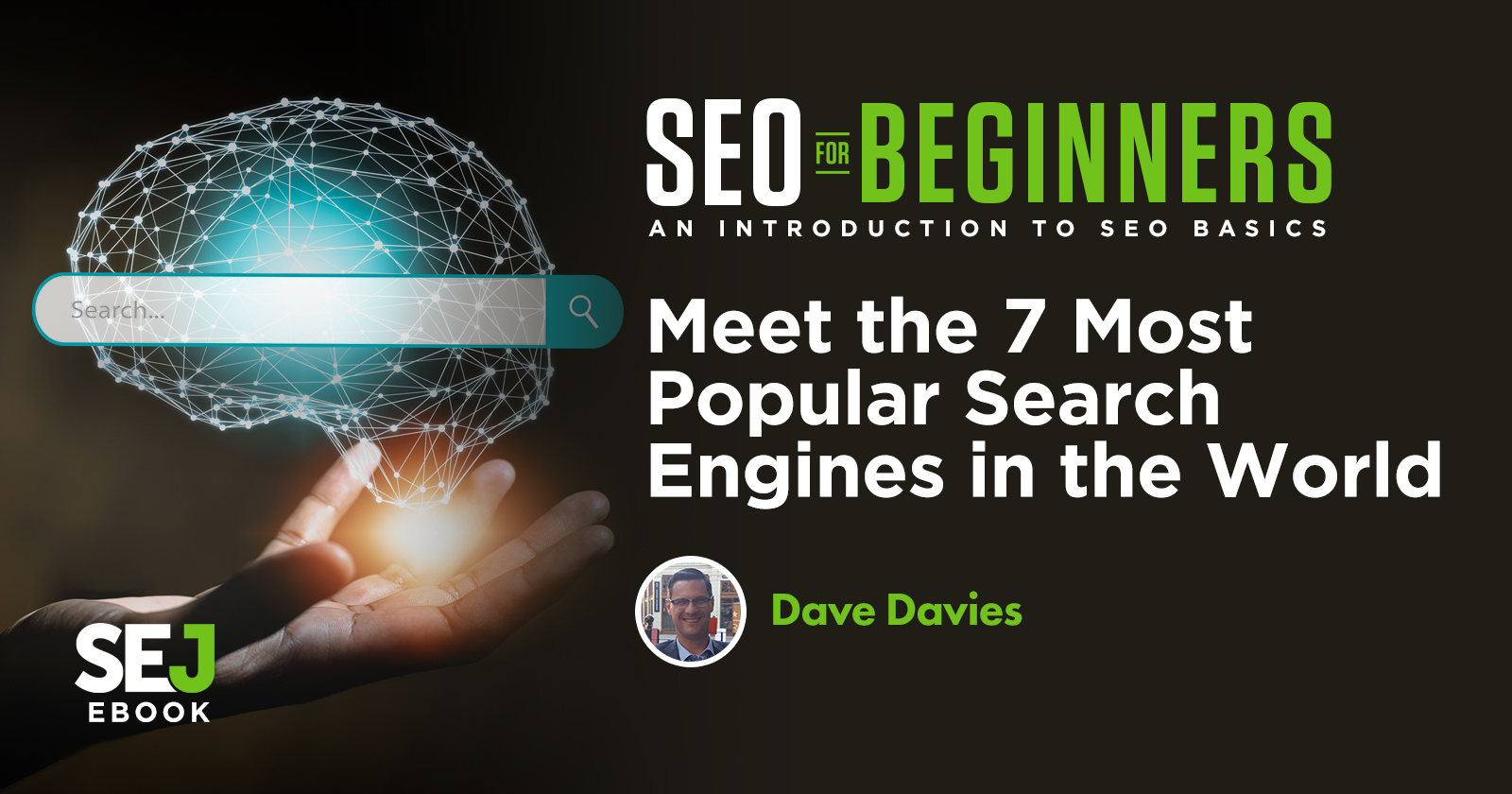
2023 was a particularly transformative year for search, witnessing significant advancements in search engine algorithms, artificial intelligence integration, and user experience enhancements.
Understanding the mechanics of each search engine goes beyond mere theoretical knowledge; it’s a strategic imperative for anyone looking to enhance their website’s visibility and drive traffic.
This article provides a comprehensive overview of the seven leading search engines that dominate the market, offering an insightful look into the latest AI advancements reshaping the search landscape.
Additionally, the article features curated links to top resources and articles, offering valuable strategies for effectively marketing to and monetizing these platforms.
This well-rounded approach ensures readers gain a thorough understanding of the current state of search engines and how to leverage their potential in the ever-evolving world of digital marketing.
1. Google
-
Screenshot from Google.com
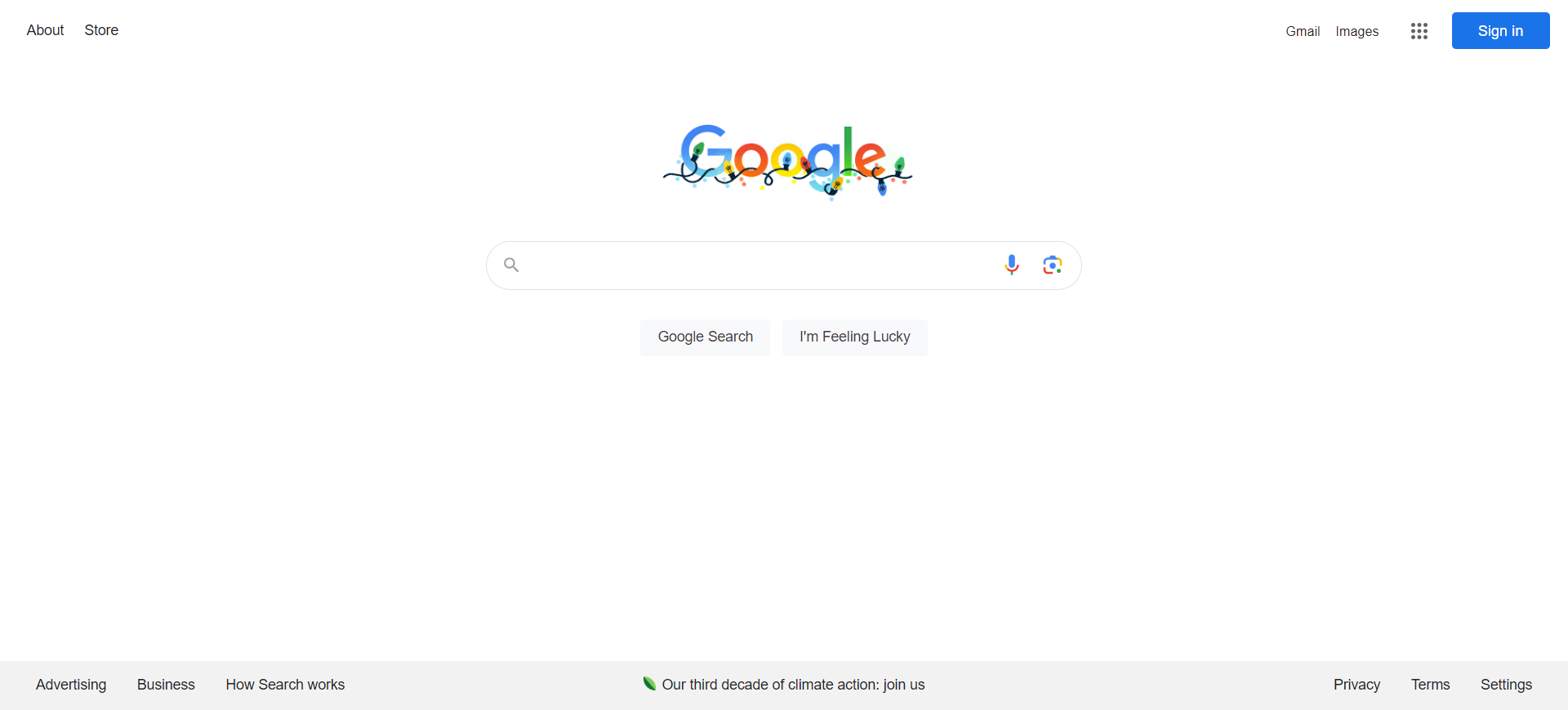
With over 81.74% of the search market share, one hardly needs to introduce readers to Google. However, it clearly needs to head up any list of search engines.
Created as a research project in 1996 by Sergey Brin and Larry Page, they offered to sell their engine in 1999 to Excite for a whopping $750,000. The offer was rejected, putting that decision at the top of my list of “bad business calls.”
Google’s parent company, Alphabet, is now worth about $1.764 trillion as of this writing.
Apart from powering its own search results, Google also provides the search results for a wide array of other engines, including the old favorite Ask.com.
Pros & Cons
The big appeal to ranking on Google is the massive potential traffic.
The downside is that everyone else wants this traffic, making organic search on Google the most competitive and paid search often much more expensive than on other sites.
Further, many argue that Google is moving searchers away from clicking through to websites and toward fulfilling their needs and intents directly on the Google website via SERP features like:
- Featured Snippets.
- Instant Answers.
- Local Pack.
- Image Pack.
- People Also Ask.
- Google Ads.
- Shopping Ads.
- Product Comparisons.
- Top Products.
- Related Searches.
- Carousels.
- Tweets.
- Google Hotels.
- Google Flights.
Thus making the competition more costly with less potential reward.
Additionally, the recent introduction of Google’s Search Generative Experience (SGE) is poised to create more challenges for marketers, as it will provide an interactive and dynamic search experience by using AI to generate content and answers directly within search results.
This could include synthesized text or composited images that are created in response to specific queries.
Optimization Tips
A few valuable resources on marketing on Google can be found at:
2. YouTube
-
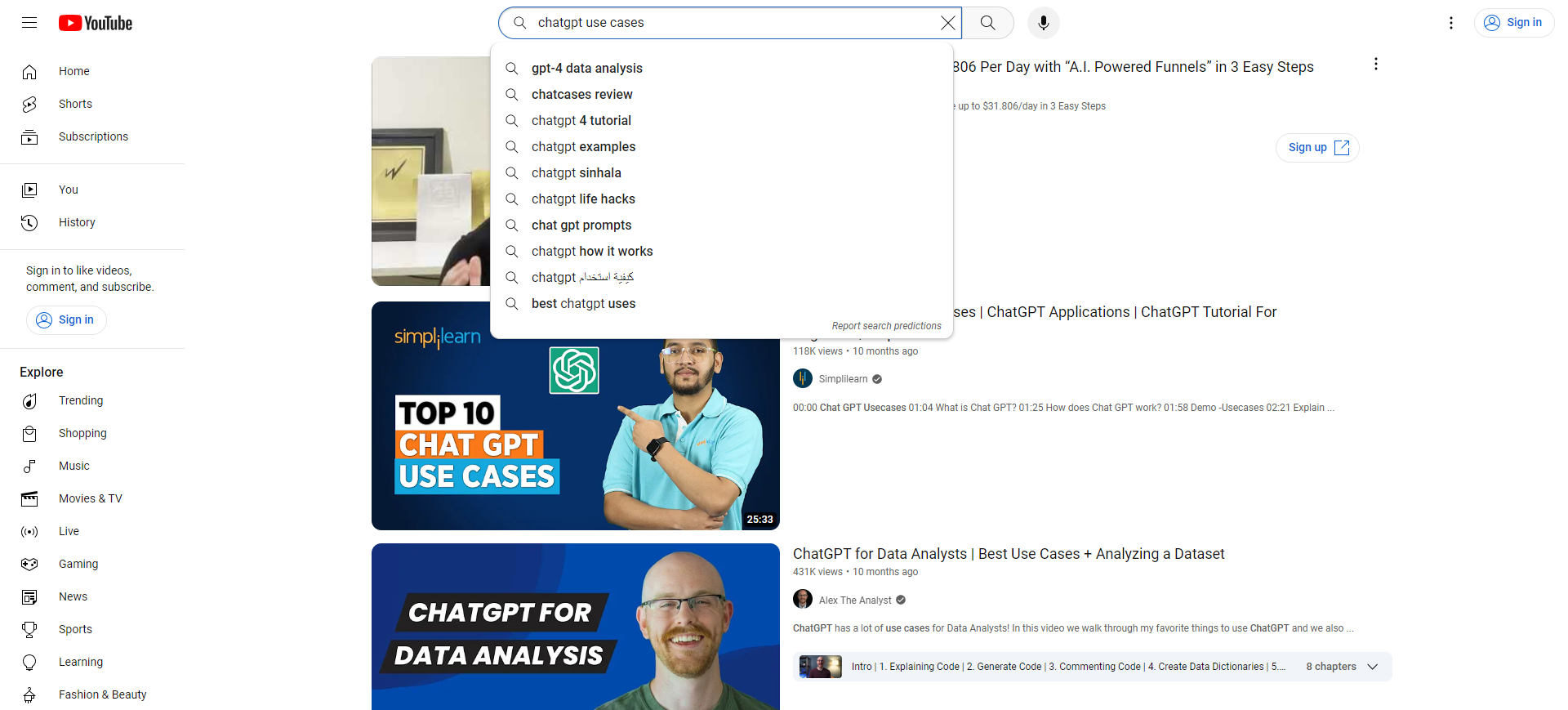 Screenshot from YouTube
Screenshot from YouTube
YouTube was founded in 2005 by veterans of PayPal and purchased just over a year later by none other than Google, giving it control over the top two search engines on this list.
YouTube is the second largest search engine, with over 2.5 billion logged-in users per month and over 1 billion hours of video watched on the platform each day.
If you’re curious about the first video uploaded (which has over 300 million views), it’s a 19-second clip of co-founder Jawed Karim at the zoo.
Not exactly MTV playing “Video Killed The Radio Star,” but it got the job done.
Pros & Cons
As with Google, it’s easy to see the allure of such massive traffic, but that’s also a pitfall for marketers.
Using YouTube as a vehicle for traffic cannot be underestimated in its impact – if successful.
However, considering that more than 500 hours of video are uploaded to YouTube every minute, it can be challenging to stand out.
With paid opportunities under the Google Ads system, it can also get pricey to compete on that front.
That said, if you can get the attention of your target demographic on YouTube with amazing campaigns such as those by MrBeast or Blendtec, you can get incredible exposure.
Optimization Tips
A few valuable pieces on marketing on YouTube can be found at:
3. Amazon
-
 Screenshot from Amazon
Screenshot from Amazon
Amazon was launched in 1995 and is considered one of the first large companies to sell goods online.
It started out selling books online but expanded rapidly. In 1999, founder Jeff Bezos won Time’s Person of the Year for making online shopping popular and accessible.
So successful is Amazon that almost half of all online shopping searches begin not at Google (31%) but at Amazon (50%). Amazon’s A9 algorithm is tailored for ecommerce, focusing on purchase intent and user behavior.
Amazon’s acquisition of Cloostermans, a leader in supply chain mechatronics, significantly enhances its warehouse automation capabilities and, coupled with the acquisition of iRobot, a robot company, this suggests we’ll continue to see the company’s influence and expansion further in the future.
Pros & Cons
The pro, as with Google, is obvious: scale.
If you sell blue widgets and you want to be where people search for them, then you want to be on Amazon.
In fact, some can argue, based on the numbers, that having a ton of great and useful content might help you rank on Google and get all those folks trying to figure out what blue widgets are and which one they need – but unless you’re on Amazon, you won’t be where they are when they’re actually looking to convert.
The downside is that the competition is fierce, the pricing and other details are easy to compare vs. competing products, and the cost of selling on Amazon can get pretty high at times.
Your unique value-adds are difficult to convey in a product-centric system. And developments such as Amazon’s decision to slash affiliate payouts introduce additional challenges.
Entering early can be difficult if you don’t have a unique product, as sales and reviews are important for rankings.
For the same reason, well-established companies with good products and reputations can hold their placements well.
There are also CPC options for product promotion. It can be pricey, but you’re also getting the searcher at the buy end of the cycle, so what engine isn’t?
Alexa’s impact on searches and sales is also an area to watch.
To prepare yourself for the possible scenario where Amazon wins (or at least does well in the personal assistant race), the third article below discusses it further.
Optimization Tips
A few valuable pieces on marketing on Amazon can be found at:
4. Microsoft Bing
-
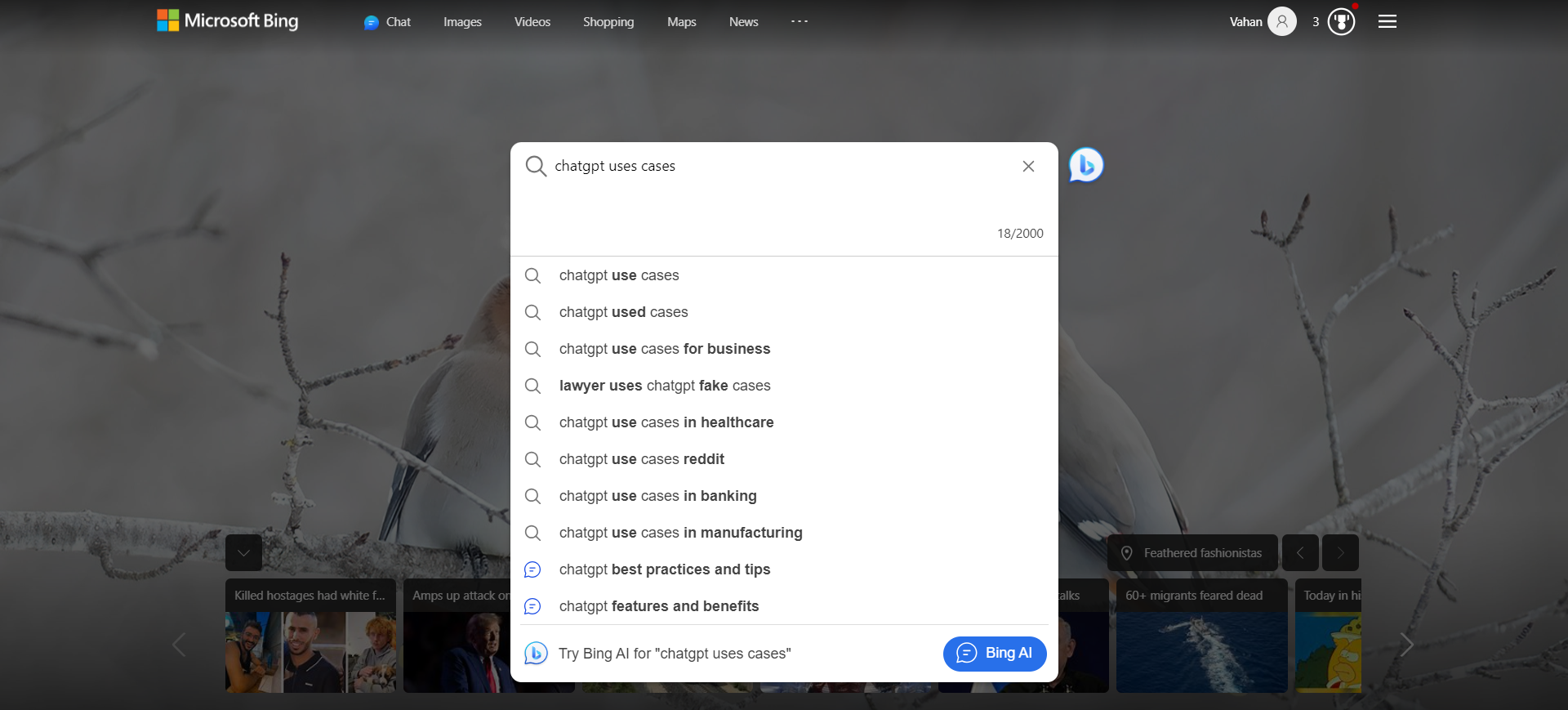 Screenshot from Bing.com
Screenshot from Bing.com
Bing replaced MSN Search as Microsoft’s answer to Google launched in 2009. It currently has 3.38% of the search market share worldwide and 7.73% in the US.
In recent times, Bing has made significant advancements, particularly with the introduction and development of Bing Chat, recently renamed as Copilot. It allows users to engage in a dialogue with the search engine, posing questions and receiving responses in a conversational format.
Bing has been making a lot of plays in the advertising space in their effort to catch up with Google, adding a number of features to Microsoft Ads and launching pubCenter, an analog of Google AdSense – though they are generally all in efforts to play catch up or bring its system in line with Google’s for import ease and manager familiarity.
Pros & Cons
While Microsoft Bing has innovated with AI chat capabilities and offers unique features, its growth in market share is hindered by the dominant position of Google.
One of the key factors influencing Bing’s market position is the browser ecosystem. Google Chrome, being the most popular web browser globally with 64% market share, naturally drives users towards using Google Search.
Safari, the default browser on Apple devices, also plays a role in Bing’s market challenges. As Safari comes pre-set with Google as its default search engine, the majority of Apple device users are more likely to use Google Search.
While Microsoft Bing doesn’t have the market share that Google has, it is respectable in many markets, including the US and the UK.
Organically, its algorithms aren’t as sophisticated as Google’s.
This gap in sophistication tends to make them easier to understand, predict, and optimize for. While this won’t be an indefinite state, it’s likely to be true for the short-term future.
Due to the lower traffic, fewer SEO pros are vying for the top 10 positions and studying algorithms, providing good ROI for those who do.
On the ad side, there are less sophisticated systems to work with. Due to the lower volume and ease of setup from existing Google Ads campaigns, the lower traffic can easily be made up for by the lower CPC.
Though from experience, I do have to warn you, its understanding of close variants would be laughable if it didn’t bleed so much money. That aside, I have found the ROI can often be better on Microsoft Bing, though the number of conversions is often far lower.
Note: This isn’t to say to simply copy your Google Ads campaigns into Microsoft Ads and be done with it. Each engine needs to be managed individually for its CPC and demographics (resulting in different conversion rates, etc.). However, copying campaigns can greatly speed up the setup process.
Optimization Tips
A few valuable pieces on marketing on Bing can be found at:
5. TikTok
-
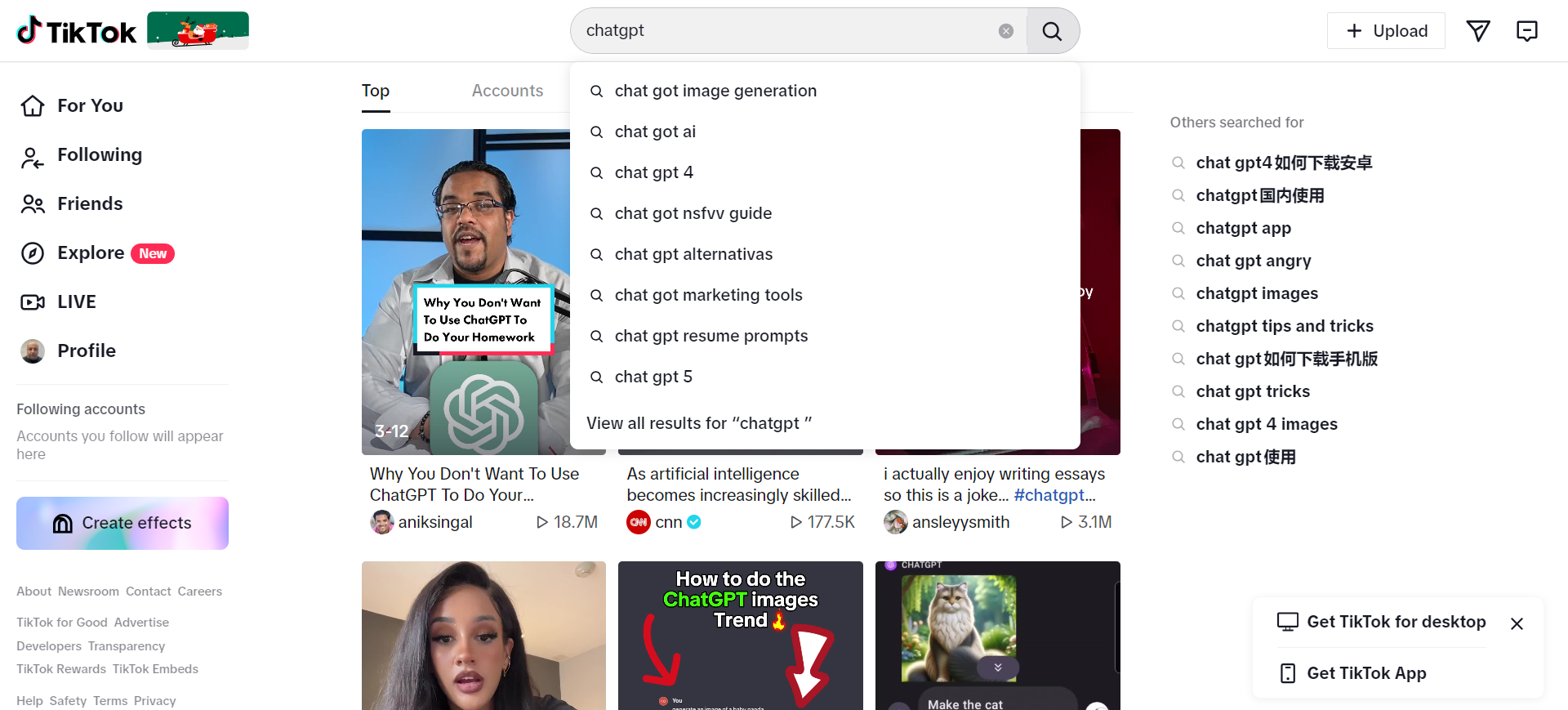 Screenshot from TikTok
Screenshot from TikTok
TikTok, with over 1.6 billion users worldwide, is increasingly being utilized as a search engine, as an increasing number of Gen Z individuals are now using TikTok for their search needs.
It is the leading social media platform in terms of the duration users spend on it.
Statistics show that, on average, users globally who have an Android device dedicate approximately 31 and a half hours each month to browsing and engaging on TikTok.
Globally, users are turning to TikTok not just for entertainment but for information and discovery, challenging the traditional dominance of search engines like Google.
Pros & Cons
TikTok’s emergence as a search engine is characterized by high user engagement, with its visually appealing and trend-centric content resonating particularly with younger audiences.
Its adaptability to current trends allows TikTok to provide timely and relevant information.
However, the platform faces challenges regarding the reliability and depth of information, with less transparent search algorithms compared to traditional search engines like Google.
Additionally, while TikTok’s ad capabilities are engaging, they might not match the advanced targeting and analytics offered by Google’s established advertising system.
Optimization Tips And Resources
6. Baidu
-
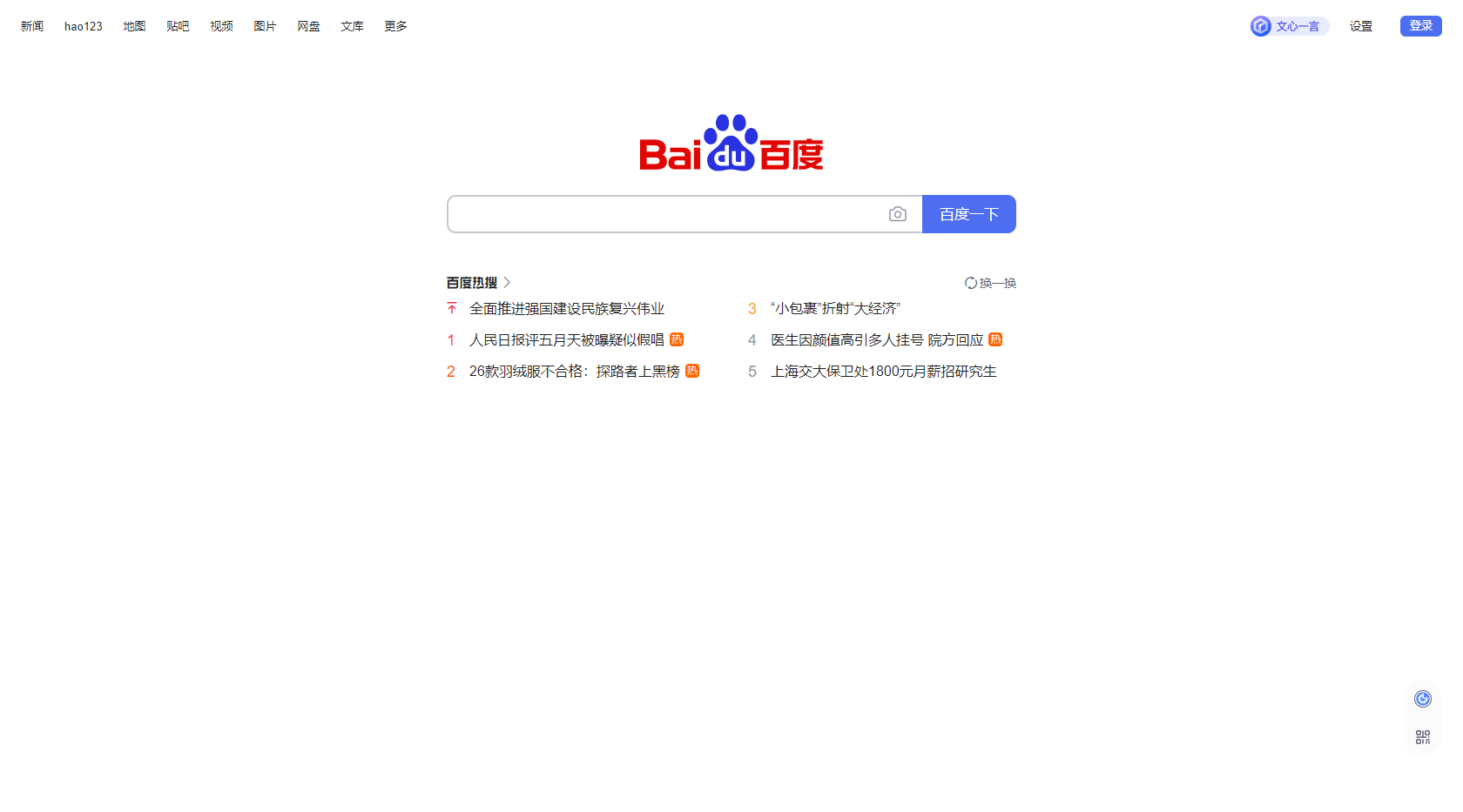 Screenshot from Baidu
Screenshot from Baidu
Baidu was founded in 2000 and is the dominant search engine in China, with over 66.52% market share, where Google comes in at 2.34% and Bing at 13.42%.
A pivotal moment in Baidu’s AI journey was its showcase at the WAVE SUMMIT 2023, where it announced substantial enhancements to ERNIE Bot, its knowledge-enhanced large language model (LLM), which has 100 million users as of now.
Outside of China, Baidu holds little influence. Within the country, Baidu powers 3.3 billion searches per day.
Pros & Cons
The downside to Baidu is that it only gives access to one market. The upside is that that market is huge.
That said, it’s critical to understand that accessing the Chinese market is not like accessing any other (such is the curse of international SEO).
The visuals, verbiage, and customs are entirely different than other markets, and Google Translate isn’t going to help you win any customers over.
To access the Chinese market via Baidu, you need someone on staff who speaks the language and understands marketing to the culture (not just “someone on my team who took two years of Mandarin in high school”).
Overall, the organic algorithms are more simplistic than Google’s, and its paid systems can be easier once you’re set up – but that setup is more difficult if you reside outside China.
Optimization Tips
A few valuable pieces on marketing on Baidu can be found at:
7. Yandex
-
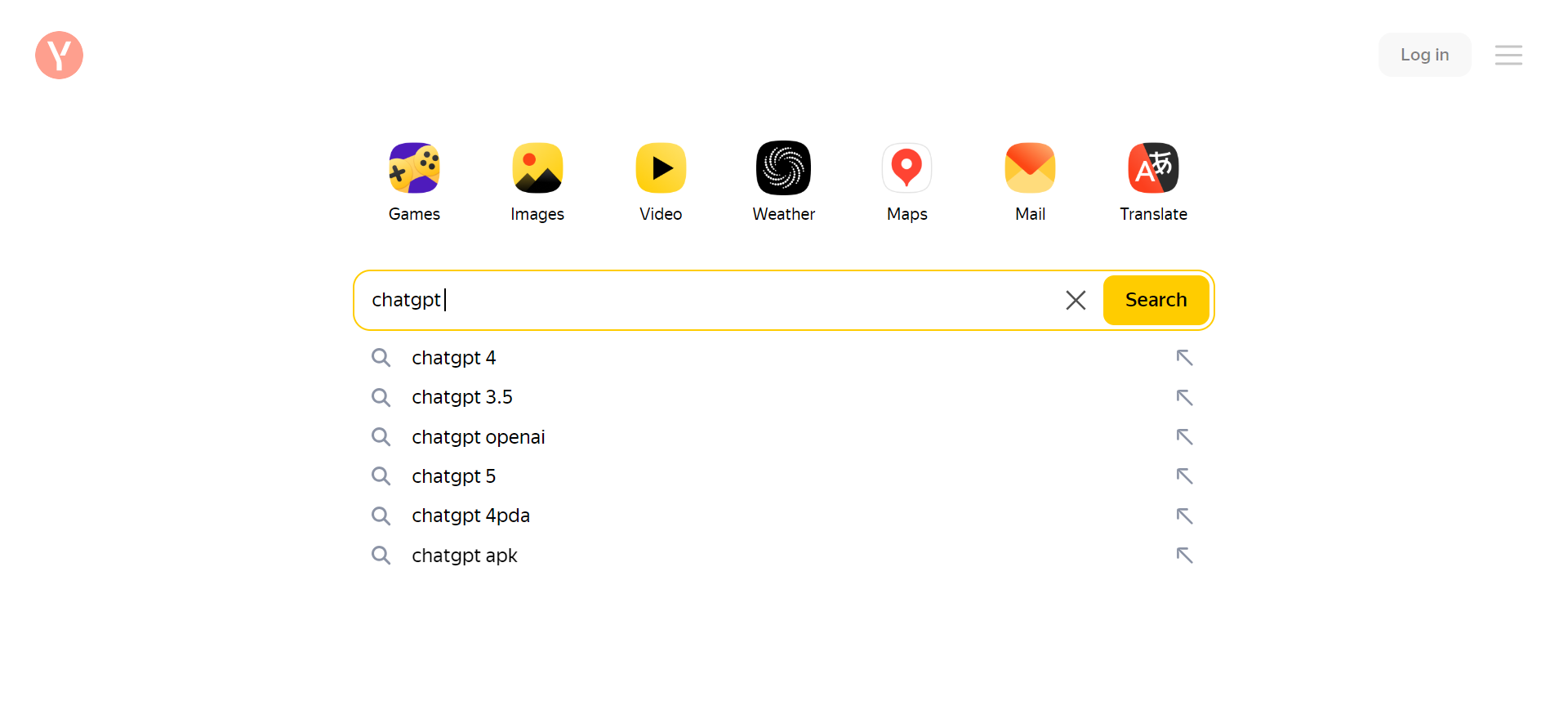 Screenshot from Yandex
Screenshot from Yandex
Yandex has its roots in a project started by two Russian developers to aid in the classification of patents in 1990 under the company Arkadia.
The term Yandex was adopted in 1993, standing for “Yet Another iNDEXer.” The Yandex.ru domain was launched in 1997. It currently powers about 69.79% of all searches in Russia and 1.78% globally.
On January 27, 2023, approximately 44GB of Yandex’s source code was leaked, providing an unprecedented look into the inner workings of the search engine, including its algorithmic structure from A to Z.
This leak was significant not only due to its size but also because it exposed over 17,800 ranking factors used by Yandex for website ranking in search results.
Pros & Cons
As with most smaller engines (compared to Google, at least), there is less traffic on Yandex – but the competition is lower, both organically and in paid.
The algorithms used by Yandex are less sophisticated than Google’s and well known; thus, easier to assess and optimize for.
Now the bad news: While Yandex’s algorithms are less sophisticated than Google’s, they have elements that make it difficult for outsiders – including a higher weighting on geolocation.
The paid system is obviously more flexible in this regard, and compared to Google, Facebook, and Microsoft Bing, it tends to be less expensive per click.
For example, ranking #1 for “casino” would cost over $55 per click in the US and only $0.82 on Yandex. Of course, that’s an English word, but even the Russian “казино” is only $1.54.
Optimization Tips
A few valuable pieces on marketing on Yandex can be found at:
Conclusion
Understanding the nuances of different search engines is essential for effective digital marketing and SEO strategies.
Platforms like YouTube and TikTok are redefining what it means to online search, extending beyond traditional text-based queries to multimedia content.
Meanwhile, engines like Baidu and Yandex cater to specific regional markets with tailored functionalities.
As we continue to witness technological advancements and shifts in user behavior, the landscape of online search and advertising will keep evolving.
Marketers and SEO professionals must stay informed and adaptable to leverage these platforms effectively.
Those interested in exploring further insights can read our article about Google alternatives.
This resource offers a broader perspective on the diverse range of search engines available, providing valuable knowledge for those looking to expand their digital marketing vision.
More resources:
Featured Image Credit: Search Engine Journal/Paulo Bobita
SEO
Google March 2024 Core Update Officially Completed A Week Ago

Google has officially completed its March 2024 Core Update, ending over a month of ranking volatility across the web.
However, Google didn’t confirm the rollout’s conclusion on its data anomaly page until April 26—a whole week after the update was completed on April 19.
Many in the SEO community had been speculating for days about whether the turbulent update had wrapped up.
The delayed transparency exemplifies Google’s communication issues with publishers and the need for clarity during core updates
Google March 2024 Core Update Timeline & Status
First announced on March 5, the core algorithm update is complete as of April 19. It took 45 days to complete.
Unlike more routine core refreshes, Google warned this one was more complex.
Google’s documentation reads:
“As this is a complex update, the rollout may take up to a month. It’s likely there will be more fluctuations in rankings than with a regular core update, as different systems get fully updated and reinforce each other.”
The aftershocks were tangible, with some websites reporting losses of over 60% of their organic search traffic, according to data from industry observers.
The ripple effects also led to the deindexing of hundreds of sites that were allegedly violating Google’s guidelines.
Addressing Manipulation Attempts
In its official guidance, Google highlighted the criteria it looks for when targeting link spam and manipulation attempts:
- Creating “low-value content” purely to garner manipulative links and inflate rankings.
- Links intended to boost sites’ rankings artificially, including manipulative outgoing links.
- The “repurposing” of expired domains with radically different content to game search visibility.
The updated guidelines warn:
“Any links that are intended to manipulate rankings in Google Search results may be considered link spam. This includes any behavior that manipulates links to your site or outgoing links from your site.”
John Mueller, a Search Advocate at Google, responded to the turbulence by advising publishers not to make rash changes while the core update was ongoing.
However, he suggested sites could proactively fix issues like unnatural paid links.
“If you have noticed things that are worth improving on your site, I’d go ahead and get things done. The idea is not to make changes just for search engines, right? Your users will be happy if you can make things better even if search engines haven’t updated their view of your site yet.”
Emphasizing Quality Over Links
The core update made notable changes to how Google ranks websites.
Most significantly, Google reduced the importance of links in determining a website’s ranking.
In contrast to the description of links as “an important factor in determining relevancy,” Google’s updated spam policies stripped away the “important” designation, simply calling links “a factor.”
This change aligns with Google’s Gary Illyes’ statements that links aren’t among the top three most influential ranking signals.
Instead, Google is giving more weight to quality, credibility, and substantive content.
Consequently, long-running campaigns favoring low-quality link acquisition and keyword optimizations have been demoted.
With the update complete, SEOs and publishers are left to audit their strategies and websites to ensure alignment with Google’s new perspective on ranking.
Core Update Feedback
Google has opened a ranking feedback form related to this core update.
You can use this form until May 31 to provide feedback to Google’s Search team about any issues noticed after the core update.
While the feedback provided won’t be used to make changes for specific queries or websites, Google says it may help inform general improvements to its search ranking systems for future updates.
Google also updated its help documentation on “Debugging drops in Google Search traffic” to help people understand ranking changes after a core update.
Featured Image: Rohit-Tripathi/Shutterstock
FAQ
After the update, what steps should websites take to align with Google’s new ranking criteria?
After Google’s March 2024 Core Update, websites should:
- Improve the quality, trustworthiness, and depth of their website content.
- Stop heavily focusing on getting as many links as possible and prioritize relevant, high-quality links instead.
- Fix any shady or spam-like SEO tactics on their sites.
- Carefully review their SEO strategies to ensure they follow Google’s new guidelines.
SEO
Google Declares It The “Gemini Era” As Revenue Grows 15%

Alphabet Inc., Google’s parent company, announced its first quarter 2024 financial results today.
While Google reported double-digit growth in key revenue areas, the focus was on its AI developments, dubbed the “Gemini era” by CEO Sundar Pichai.
The Numbers: 15% Revenue Growth, Operating Margins Expand
Alphabet reported Q1 revenues of $80.5 billion, a 15% increase year-over-year, exceeding Wall Street’s projections.
Net income was $23.7 billion, with diluted earnings per share of $1.89. Operating margins expanded to 32%, up from 25% in the prior year.
Ruth Porat, Alphabet’s President and CFO, stated:
“Our strong financial results reflect revenue strength across the company and ongoing efforts to durably reengineer our cost base.”
Google’s core advertising units, such as Search and YouTube, drove growth. Google advertising revenues hit $61.7 billion for the quarter.
The Cloud division also maintained momentum, with revenues of $9.6 billion, up 28% year-over-year.
Pichai highlighted that YouTube and Cloud are expected to exit 2024 at a combined $100 billion annual revenue run rate.
Generative AI Integration in Search
Google experimented with AI-powered features in Search Labs before recently introducing AI overviews into the main search results page.
Regarding the gradual rollout, Pichai states:
“We are being measured in how we do this, focusing on areas where gen AI can improve the Search experience, while also prioritizing traffic to websites and merchants.”
Pichai reports that Google’s generative AI features have answered over a billion queries already:
“We’ve already served billions of queries with our generative AI features. It’s enabling people to access new information, to ask questions in new ways, and to ask more complex questions.”
Google reports increased Search usage and user satisfaction among those interacting with the new AI overview results.
The company also highlighted its “Circle to Search” feature on Android, which allows users to circle objects on their screen or in videos to get instant AI-powered answers via Google Lens.
Reorganizing For The “Gemini Era”
As part of the AI roadmap, Alphabet is consolidating all teams building AI models under the Google DeepMind umbrella.
Pichai revealed that, through hardware and software improvements, the company has reduced machine costs associated with its generative AI search results by 80% over the past year.
He states:
“Our data centers are some of the most high-performing, secure, reliable and efficient in the world. We’ve developed new AI models and algorithms that are more than one hundred times more efficient than they were 18 months ago.
How Will Google Make Money With AI?
Alphabet sees opportunities to monetize AI through its advertising products, Cloud offerings, and subscription services.
Google is integrating Gemini into ad products like Performance Max. The company’s Cloud division is bringing “the best of Google AI” to enterprise customers worldwide.
Google One, the company’s subscription service, surpassed 100 million paid subscribers in Q1 and introduced a new premium plan featuring advanced generative AI capabilities powered by Gemini models.
Future Outlook
Pichai outlined six key advantages positioning Alphabet to lead the “next wave of AI innovation”:
- Research leadership in AI breakthroughs like the multimodal Gemini model
- Robust AI infrastructure and custom TPU chips
- Integrating generative AI into Search to enhance the user experience
- A global product footprint reaching billions
- Streamlined teams and improved execution velocity
- Multiple revenue streams to monetize AI through advertising and cloud
With upcoming events like Google I/O and Google Marketing Live, the company is expected to share further updates on its AI initiatives and product roadmap.
Featured Image: Sergei Elagin/Shutterstock
SEO
brightonSEO Live Blog

Hello everyone. It’s April again, so I’m back in Brighton for another two days of Being the introvert I am, my idea of fun isn’t hanging around our booth all day explaining we’ve run out of t-shirts (seriously, you need to be fast if you want swag!). So I decided to do something useful and live-blog the event instead.
Follow below for talk takeaways and (very) mildly humorous commentary. sun, sea, and SEO!
-

 WORDPRESS7 days ago
WORDPRESS7 days ago7 Best WooCommerce Points and Rewards Plugins (Free & Paid)
-

 MARKETING7 days ago
MARKETING7 days agoBattling for Attention in the 2024 Election Year Media Frenzy
-

 WORDPRESS6 days ago
WORDPRESS6 days ago13 Best HubSpot Alternatives for 2024 (Free + Paid)
-

 MARKETING6 days ago
MARKETING6 days agoAdvertising in local markets: A playbook for success
-

 SEO7 days ago
SEO7 days agoGoogle Answers Whether Having Two Sites Affects Rankings
-

 SEARCHENGINES6 days ago
SEARCHENGINES6 days agoGoogle Core Update Flux, AdSense Ad Intent, California Link Tax & More
-

 AFFILIATE MARKETING7 days ago
AFFILIATE MARKETING7 days agoGrab Microsoft Project Professional 2021 for $20 During This Flash Sale
-

 PPC4 days ago
PPC4 days ago10 Most Effective Franchise Marketing Strategies




![The Current State of Google’s Search Generative Experience [What It Means for SEO in 2024] person typing on laptop with](https://articles.entireweb.com/wp-content/uploads/2024/04/The-Current-State-of-Googles-Search-Generative-Experience-What-It.webp-400x240.webp)
![The Current State of Google’s Search Generative Experience [What It Means for SEO in 2024] person typing on laptop with](https://articles.entireweb.com/wp-content/uploads/2024/04/The-Current-State-of-Googles-Search-Generative-Experience-What-It.webp-80x80.webp)







